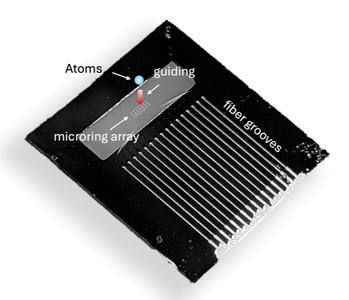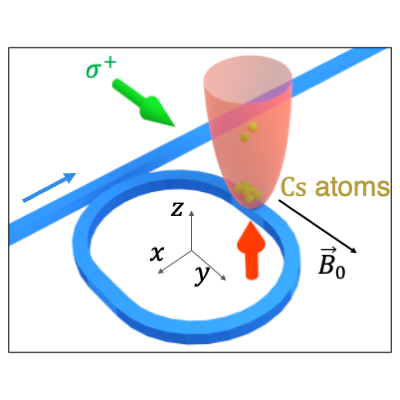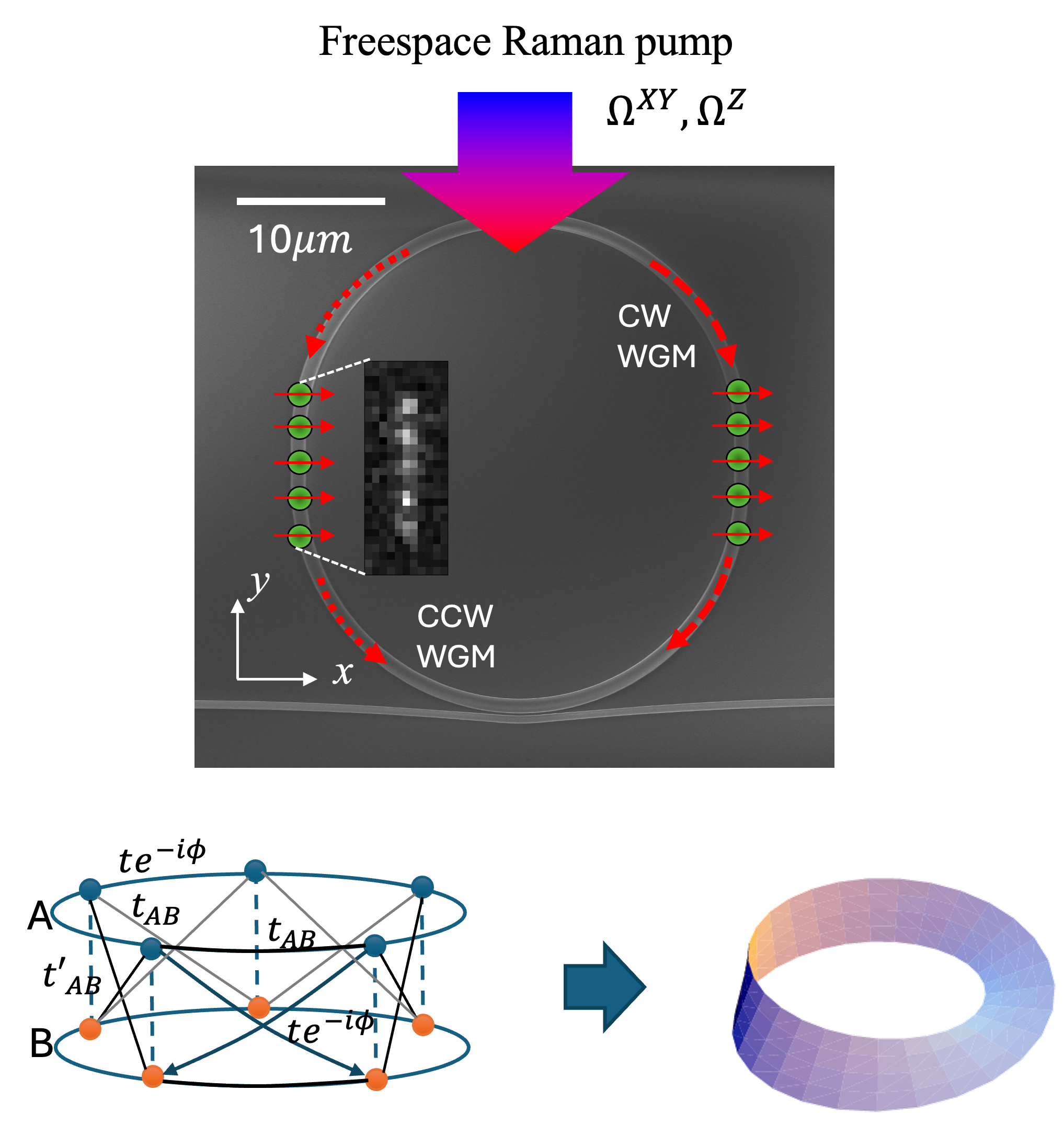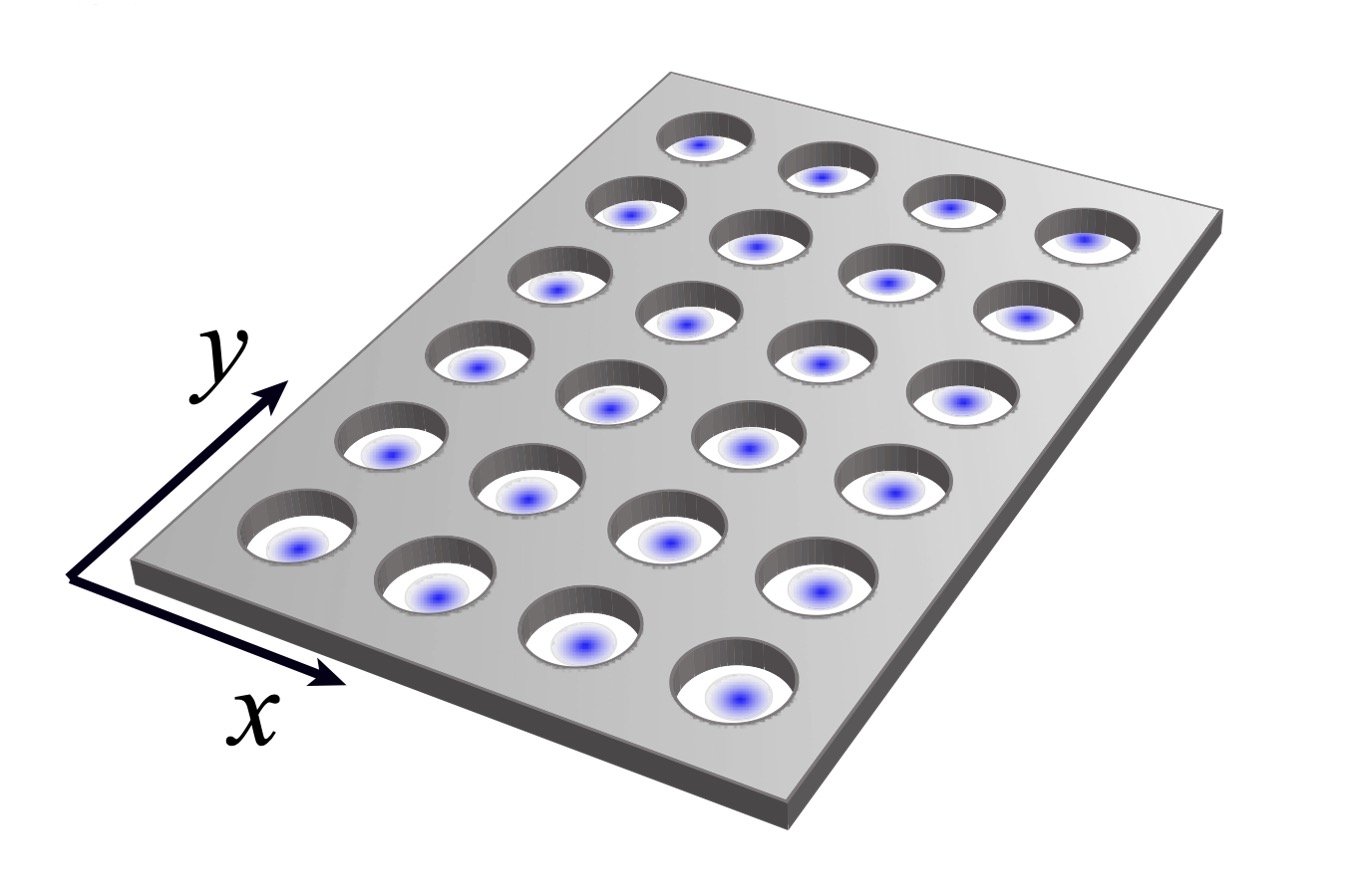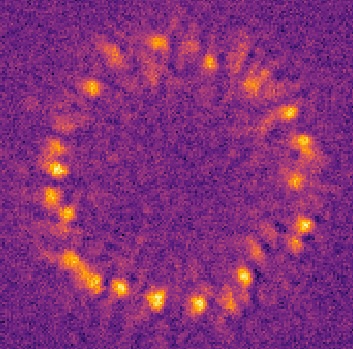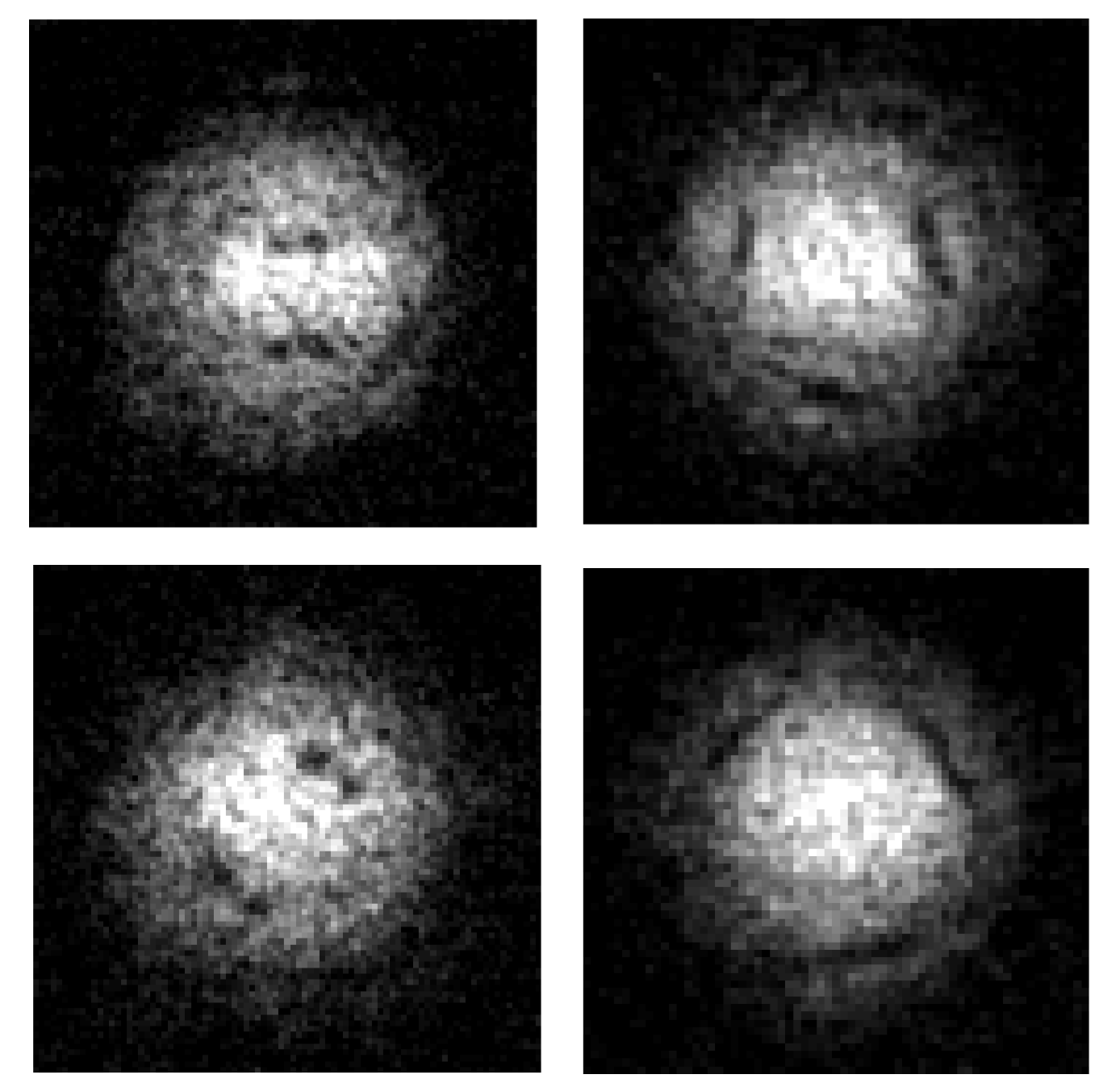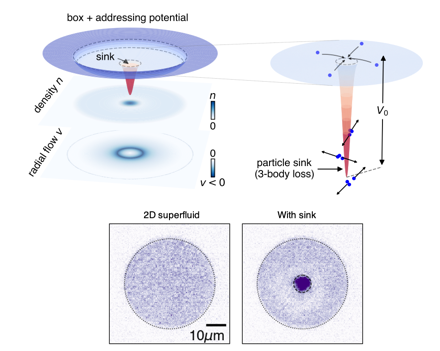Research
We are interested in using tabletop atomic, molecular, and optical (AMO) systems to engineer novel quantum materials and study intriguing phenomena across disciplines, from condensed matter to cosmology. By exploiting physics governed by universality, we can make a cold cloud of atoms behave similarly to exotic quantum materials in solids or even cosmic fluids in the early universe. AMO systems allow us to apply quantum control and measurements with great precision, offering a clean, designer platform to explore fundamental problems in quantum mechanics, field theory, and statistical physics.
Our lab utilizes the tunability and addressability of atomic quantum gases to study emergent phenomena and non-equilibrium dynamics in many-body systems with strong correlations. We are also building hybrid atom-nanophotonic quantum devices and exploring new avenues of topological quantum materials using strongly interacting light and matter. Below is a brief description of two main research directions.
Atom-Nanophotonics Integration
Using state-of-the-art nanophotonic circuits as interfaces, we combine ultracold atoms and optical photons to study novel collective phenomena in waveguide and cavity quantum electrodynamics. This approach enables us to generate quantum entanglement between atoms and photons for applications in quantum information, quantum simulation, distributed quantum sensing, and metrology.
Laser cooling and trapping on nanophotonic circuits
Interfacing cold atoms with integrated nanophotonic devices offers new paradigms for engineering atom-light interactions (RMP 2018) and provides a scalable route for quantum sensing, metrology, and quantum information processing. We are developing efficient methods to laser cool many neutral atoms on nanophotonic circuits. Recently, we successfully demonstrated the direct loading of an atomic ensemble into an optical microtrap on a 2D nanophotonic circuit, observing single photon routing PRL (2023) and atom-light superradiant coupling PRX (2024).
In our ongoing and future experiments, we aim to explore collective quantum optics with atom arrays trapped in optical lattices formed by evanescent fields; see Optica (2019). We also investigate direct laser cooling to quantum degeneracy for many-body physics and cavity-assisted ultracold molecule assembly on nanophotonic circuits; see NJP (2017) and PRA (2020). These efforts will enable new studies and applications in quantum nonlinear optics, quantum simulations, sensing, and quantum chemistry.
Programmable atom array assembly
An array of reconfigurable optical tweezers can guide and trap atoms on a nanophotonic circuit, forming an organized atom array for quantum simulation; see our earlier work in Nature Comm. 2019. We will utilize photon-mediated, long-range spin-spin interactions (Nature Photonics 2015 and Nature Photonics 2015) to engineer quantum spin models and explore topological physics. The ability to dynamically control the boundary condition via long-range interactions enables new ways to access and manipulate topological states—further reading: PNAS (2016).
Our group is also exploring:
- 2D photonic crystals for atom-light interactions
- MEMS integration for sensing and metrology applications
- ...
We fabricate all our circuits in-house in the Scifres Nanofabrication Lab at the Birck Nanotechnology Center. We welcome students and postdocs interested in nanofabrication to join our research group!
Atomic Quantum Gas
Leveraging state-of-the-art techniques to manipulate atomic quantum gases, we can study quantum many-body dynamics and observe intricate phenomena discussed across disciplines. Below are a few examples.
Quantum quench dynamics
We explore quantum quench dynamics and self-patterning instabilities using tunable Bose gases trapped in a programmable optical box. We reported the observation of Townes solitons (PRL 2020, 2021), the collapse of a quantum vortex, and the formation of vortex solitons and Townes soliton ‘necklaces’ in the attractive interaction regime (arXiv 2024). Additionally, we observed the first emergence of ring dark solitons (PRX 2023) and ordered vortex dipole ‘necklaces’ in a box-quenched superfluid. These instabilities, primarily seeded from quantum fluctuations, result in self-amplified excitations and defects that could preserve quantum coherence and may exhibit non-classical correlations (PRL 2021).
We are interested in studying phase coherence and many-body quantum entanglement resulting from quantum quench dynamics and finding potential applications in quantum sensing and metrology.
Other quantum simulation-related topics
Our group is currently exploring the following topics:
- Many-body breathers with attractive interactions
- Analogue gravity in 2D Bose gases (arXiv 2023)
- Quantum turbulence from supersonic flows
- Quantum critical transport
- Quantum atom-light interface using 2D atom arrays
- ...
Previous results on quantum gases
